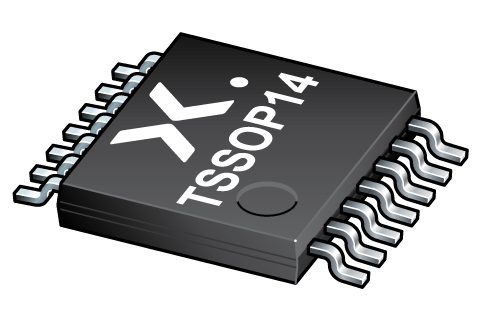
Register once, drag and drop ECAD models into your CAD tool and speed up your design.
Click here for more information74HC04DB-Q100
Hex inverter
The 74HC04-Q100; 74HCT04-Q100 is a hex inverter. The inputs include clamp diodes that enable the use of current limiting resistors to interface inputs to voltages in excess of VCC.
This product has been qualified to the Automotive Electronics Council (AEC) standard Q100 (Grade 1) and is suitable for use in automotive applications.
Alternatives
Features and benefits
Automotive product qualification in accordance with AEC-Q100 (Grade 1)
Specified from -40 °C to +85 °C and from -40 °C to +125 °C
Wide supply voltage range from 2.0 V to 6.0 V
CMOS low power dissipation
High noise immunity
Latch-up performance exceeds 100 mA per JESD 78 Class II Level B
Complies with JEDEC standards:
JESD8C (2.7 V to 3.6 V)
JESD7A (2.0 V to 6.0 V)
Input levels:
For 74HC04-Q100: CMOS level
For 74HCT04-Q100: TTL level
ESD protection:
HBM: ANSI/ESDA/JEDEC JS-001 class 2 exceeds 2000 V
CDM: ANSI/ESDA/JEDEC JS-002 class C3 exceeds 1000 V
Multiple package options
DHVQFN package with Side-Wettable Flanks enabling Automatic Optical Inspection (AOI) of solder joints
封裝
下表中的所有產(chǎn)品型號均已停產(chǎn) 。
| 型號 | 可訂購的器件編號,(訂購碼(12NC)) | 狀態(tài) | 標(biāo)示 | 封裝 | 外形圖 | 回流焊/波峰焊 | 包裝 |
|---|---|---|---|---|---|---|---|
| 74HC04DB-Q100 | 74HC04DB-Q100J (935301531118) |
Obsolete | no package information | ||||
Series
文檔 (5)
| 文件名稱 | 標(biāo)題 | 類型 | 日期 |
|---|---|---|---|
| 74HC_HCT04_Q100 | Hex inverter | Data sheet | 2024-02-16 |
| AN11044 | Pin FMEA 74HC/74HCT family | Application note | 2019-01-09 |
| hc04 | 74HC04 IBIS model | IBIS model | 2022-10-21 |
| hc | HC/HCT Spice model | SPICE model | 2022-02-17 |
| HCT_USER_GUIDE | HC/T User Guide | User manual | 1997-10-31 |
Longevity
The Nexperia Longevity Program is aimed to provide our customers information from time to time about the expected time that our products can be ordered. The NLP is reviewed and updated regularly by our Executive Management Team. View our longevity program here.
How does it work?
The interactive datasheets are based on the Nexperia MOSFET precision electrothermal models. With our interactive datasheets you can simply specify your own conditions interactively. Start by changing the values of the conditions. You can do this by using the sliders in the condition fields. By dragging the sliders you will see how the MOSFET will perform at the new conditions set.
